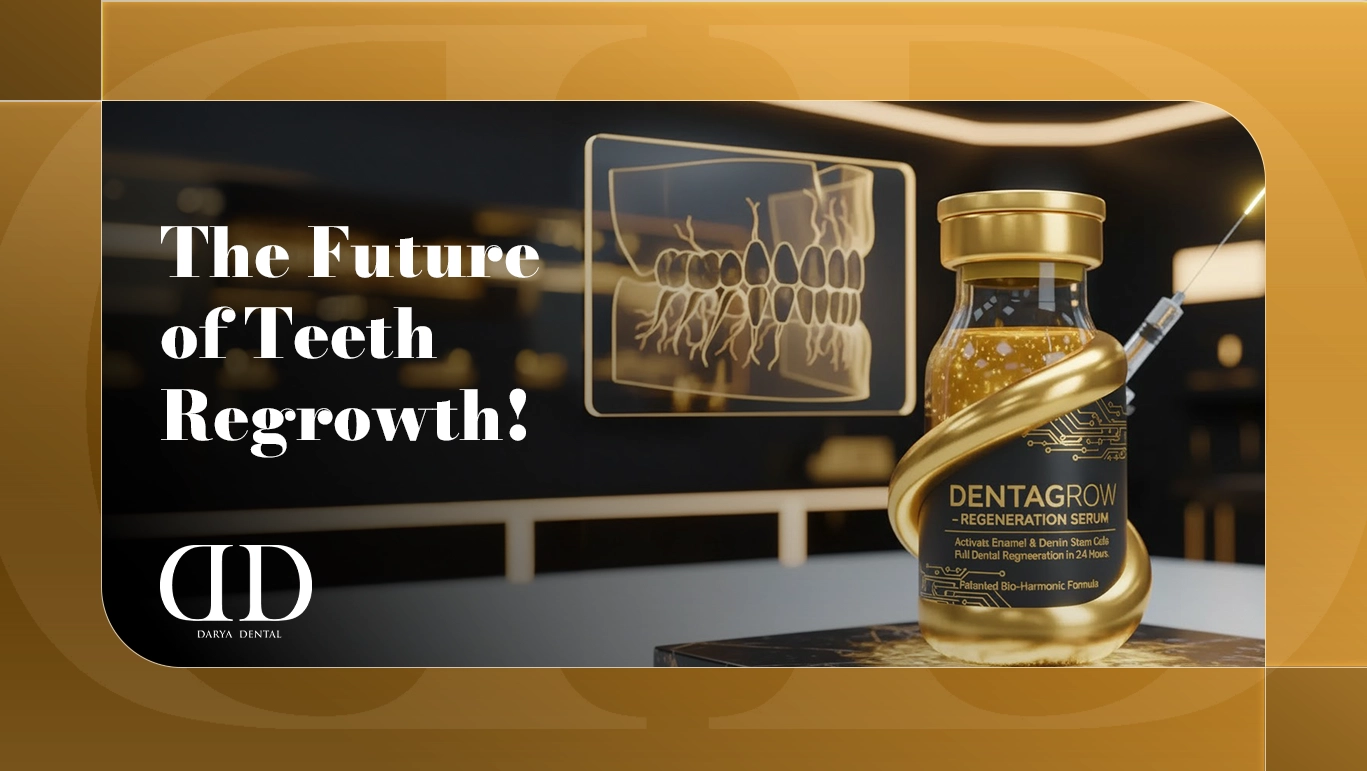
One day you are walking into your dentist’s office and being told that instead of getting an expensive implant, you could simply regrow your missing tooth naturally. It sounds like something out of a science fiction movie, but this remarkable possibility is becoming reality thanks to groundbreaking research happening right now.
The field of teeth regrowth has exploded in recent years, with clinical trials currently underway that are showing incredible promise. Scientists have discovered ways to essentially “wake up” dormant tooth-growing capabilities that we all carry in our genetic code, and the results are nothing short of remarkable.
After following these developments closely, I can confidently say we’re witnessing one of the most significant breakthroughs in dental care in decades. Let’s explore what this means for the future of oral health and how it could change everything we know about dental treatment.
Understanding the Science Behind Teeth Regrowth
To understand how teeth regrowth works, we need to look at something most people don’t know about human biology. While we’re all familiar with baby teeth and adult teeth, scientists have discovered evidence of what they call “successional teeth” – essentially a third set of teeth that remains dormant throughout our lives.
The breakthrough came when researchers identified specific proteins that control tooth development. The key player is a protein called USAG-1 (uterine sensitization associated gene-1), which acts like a biological brake system, preventing new teeth from forming after our adult teeth come in.
Dr. Katsu Takahashi and his team at Osaka University have developed an innovative approach that involves creating antibodies to neutralize this USAG-1 protein. By temporarily blocking its action, they can reactivate the natural tooth development process. The clinical trials in Japan are demonstrating that this approach can successfully trigger the growth of new, fully functional teeth in humans.
Here’s how the process works in simple terms:
Your mouth contains dental stem cells that have been waiting your entire life for the right signal to create new teeth. These stem cells are naturally suppressed by inhibitory factors in your body. The new therapy temporarily removes these inhibitory signals, essentially giving your stem cells permission to do what they were designed to do – grow teeth.
Current Clinical Trials: Real Results from Human Studies
The most exciting aspect of this research is that we’re not talking about theoretical possibilities anymore. Human trials began in 2024, and the early results have been encouraging enough to capture international attention. Reports from the Economic Times highlight how this breakthrough could transform dental care globally.
The current trials focus on individuals with congenital missing teeth – people who were born without certain teeth due to genetic factors. Participants receive a single injection of the tooth regrowth medication, and researchers monitor the development process using advanced imaging techniques.
The timeline for tooth development is realistic rather than miraculous. Initial tooth bud formation typically begins within 2-4 weeks of treatment, with complete tooth development taking approximately 6-9 months. While this might seem lengthy, it’s comparable to the time required for traditional dental implant procedures when you factor in healing periods and multiple appointments.
Key findings from the trials include:
Safety Profile: Participants have experienced minimal side effects, mostly limited to mild discomfort at the injection site that resolves quickly.
Success Rates: Preliminary data indicates successful tooth formation in over 80% of cases, which is remarkably high for an experimental treatment.
Quality of New Teeth: The regrown teeth demonstrate proper enamel formation, healthy root development, and successful integration with surrounding tissues and nerves.
How This Connects to Common Dental Issues
Interestingly, research into teeth regrowth is providing new insights into other dental problems, particularly issues related to wisdom teeth. The same biological processes involved in tooth development play important roles in healing after dental procedures.
Understanding these mechanisms is helping dentists better manage complications like wisdom teeth removal swelling. When wisdom teeth are extracted, the body’s natural healing response involves many of the same proteins and growth factors being studied in regeneration research.
For patients dealing with swelling after wisdom teeth removal, this research offers hope for improved treatment protocols. Scientists are exploring whether modified versions of tooth development proteins could help reduce swelling after wisdom teeth removal and accelerate healing.
The typical timeline for how long wisdom teeth swelling lasts is 7-10 days, with peak swelling occurring at 48-72 hours post-surgery. However, new understanding from regeneration research may lead to treatments that could significantly shorten this recovery period.
Conditions like pericoronitis (inflammation around partially erupted wisdom teeth) and impacted wisdom teeth are also being viewed through the lens of tooth development biology. This new perspective could lead to treatment approaches that work with the body’s natural processes rather than against them.
When does swelling from wisdom teeth stop varies by individual, but the regeneration research suggests that supporting the body’s natural healing cascades could make recovery faster and more comfortable for patients.
Global Impact and Future Applications
While Japan is leading the current research, the implications extend far beyond any single country. The University of Maryland has been conducting complementary research on bone regrowth that could work alongside tooth regeneration technologies.
The potential global impact is significant. In regions where dental care is expensive or difficult to access, a treatment that can regrow teeth naturally could address major public health challenges. The technology could potentially eliminate the need for many traditional dental procedures, making quality oral health care more accessible worldwide.
From an economic perspective, the dental implant industry is worth billions of dollars annually. If teeth regrowth becomes widely available, it could fundamentally change how dental care is delivered and priced. Some economists predict this could be one of the most disruptive medical technologies of the next decade.
What Different Patients Can Expect
The impact of teeth regrowth technology will vary depending on individual circumstances:
Parents with Young Children: Accidental tooth loss in children could become much less traumatic, with natural regrowth offering a permanent solution without the need for years of temporary measures followed by expensive adult treatments.
Adults with Missing Teeth: People currently facing decisions about bridges, partial dentures, or multiple implants could have access to a more natural alternative that restores full function without affecting surrounding teeth.
Older Adults: Age-related tooth loss could potentially be reversed, allowing people to maintain their natural teeth and better nutrition throughout their lives.
Those with Congenital Conditions: People born with missing teeth are the primary focus of current trials and stand to benefit most immediately from this technology.
Addressing Common Questions and Concerns
As this technology develops, people naturally have questions about safety, cost, and availability:
Safety Considerations: The current safety profile appears excellent, though we’re still in early clinical trials. The approach uses antibody therapy, which is well-established in other medical fields, reducing some risk concerns. However, long-term effects are still being studied.
Cost Expectations: Pricing is difficult to predict at this stage. Dental implants currently cost $3,000-$6,000 per tooth in the United States. Even if teeth regrowth therapy initially costs similar amounts, economies of scale could make it more affordable over time.
Availability Timeline: Current projections suggest limited availability could begin around 2030, with broader access potentially by 2035. While this may seem distant, it represents rapid progress in medical terms.
Eligibility Requirements: Current trials focus on congenitally missing teeth. Whether the technology will work for teeth lost to decay, trauma, or gum disease requires additional research.
The Broader Medical Implications
Teeth regrowth research represents more than just a dental advancement – it’s pioneering work in regenerative medicine that could influence treatment of other conditions. The principles being refined in these dental studies are informing research into bone regeneration, cartilage repair, and other tissue engineering applications.
The success of these trials provides valuable proof-of-concept for regenerative approaches to healthcare. It demonstrates that with proper understanding of biological processes, we can potentially restore rather than simply replace damaged or missing body parts.
Preparing for the Future
While waiting for this technology to become widely available, there are practical steps you can take:
Maintain Good Oral Health: The healthier your mouth is now, the better positioned you’ll be to benefit from future regenerative treatments. This means consistent oral hygiene and regular dental care.
Stay Updated: The field is advancing rapidly. Keep informed through reputable medical and dental sources about trial progress and regulatory developments.
Make Informed Treatment Decisions: If you’re currently facing major dental work, discuss with your dentist whether your situation might allow for waiting for regenerative options, depending on your specific needs and timeline.
Consider Participation: If you meet criteria for clinical trials, participation could provide access to cutting-edge treatment while advancing medical knowledge.
Looking Ahead: The Future of Dental Care
The development of teeth regrowth technology represents a fundamental shift in how we approach dental health. Instead of managing tooth loss and decay, we may soon be able to prevent and reverse these problems at a biological level.
The implications extend beyond individual patient care to public health policy, insurance coverage, and the structure of dental practice itself. As this technology matures, it could reduce the global burden of dental disease while improving quality of life for millions of people.
Current research suggests that what begins as treatment for missing teeth could evolve into comprehensive regenerative dental therapy. We may be looking at the possibility of maintaining natural teeth throughout our entire lives, eliminating many of the age-related dental problems that currently seem inevitable.
Conclusion
The field of teeth regrowth is moving from experimental research to clinical reality. While challenges remain and questions persist, the early results from human trials are encouraging enough to suggest we’re on the verge of a major breakthrough in dental care.
This technology won’t solve every dental problem immediately, and it won’t be available to everyone right away. However, it represents hope for a future where tooth loss doesn’t have to be permanent, where expensive and invasive procedures might become unnecessary, and where maintaining oral health throughout life becomes much more achievable.
As we wait for broader availability, the best approach is to stay informed, maintain good oral health, and work with dental professionals who understand both current best practices and emerging possibilities. The future of dental care is being written now, and it’s more promising than many of us dared to hope.
The next time you visit your dentist, consider asking about their awareness of regenerative dental technologies. You might be surprised by how much the conversation around tooth replacement is already changing. We’re moving from an era of dental repair to one of dental regeneration, and that shift could benefit all of us in ways we’re just beginning to understand.






